
Epipactis, or helleborine, is a genus of terrestrial orchids consisting of approximately 70 species. This genus is abbreviated as Epcts in horticultural trade.

Cephalanthera rubra, known as red helleborine, is an orchid found in Europe, North Africa and southwest Asia. Although reasonably common in parts of its range, this Cephalanthera has always been one of the rarest orchids in Britain.

Windsor Hill is a 61.8-hectare (153-acre) biological Site of Special Scientific Interest in Princes Risborough in Buckinghamshire. It lies within the Chilterns Area of Outstanding Natural Beauty, and it is featured in the Nature Conservation Review. A small part is managed by the Berkshire, Buckinghamshire and Oxfordshire Wildlife Trust, and access to this area requires a permit.
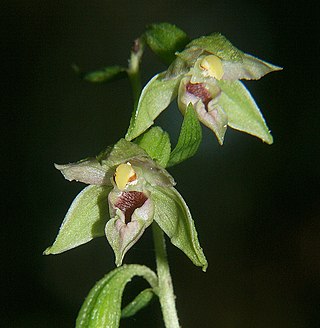
Epipactis leptochila, the narrow-lipped helleborine, is a species of orchid in the genus Epipactis. Found in chalk or limestone-based beech and hornbeam woodland in southern England, the orchids are also found with birch and alder trees in Scotland and the north of England. The narrow-lipped helleborine blooms from early June to mid-August. Epipactis leptochila is also found in parts of northern Europe but it is known for its presence in England. Due to woodland clearing, the orchids are becoming less common.

Cephalanthera longifolia, the narrow-leaved helleborine, sword-leaved helleborine or long-leaved helleborine, is a rhizomatous herbaceous perennial plant in the family Orchidaceae. It is native to light woodland, and widespread across Europe, Asia and North Africa from Ireland and Morocco to China. This includes the United Kingdom, Iran, Russia, Kazakhstan, Turkey, Algeria, India, Pakistan, Germany, Italy, France, Spain, Portugal and many other countries.
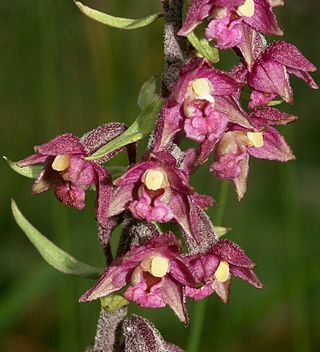
Epipactis atrorubens, the dark-red helleborine or royal helleborine, is an herbaceous plant in the orchid family, Orchidaceae.
Burderop Wood is a 48.5 hectare biological Site of Special Scientific Interest in Wiltshire, notified in 1971.

Postlebury Wood is an 87 hectare biological Site of Special Scientific Interest south of Trudoxhill in Somerset, notified in 1987.

Epipactis helleborine, the broad-leaved helleborine, is a terrestrial species of orchid with a broad distribution. It is a long lived herb which varies morphologically with ability to self-pollinate.

Epipactis palustris, the marsh helleborine, is a species of orchid native to Europe and Asia.
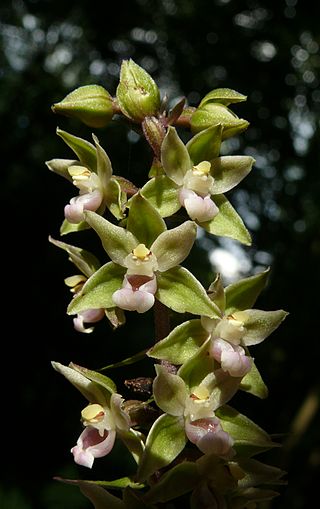
Epipactis purpurata, the violet helleborine, is an orchid found in France, the United Kingdom, Slovenia, and Serbia.
Epipactis helleborine var. youngiana, known as Young's helleborine, is a variety of orchid that is endemic to Great Britain. It has also been treated as a separate species, Epipactis youngiana.

Epipactis gigantea is a species of orchid known as the stream orchid, giant helleborine, and chatterbox. This wildflower is native to western North America from British Columbia to central Mexico. This is one of the most abundant orchids of the Pacific coast of North America.

Cephalanthera damasonium, the white helleborine, is a species of orchid. It is widespread across much of Europe, the Middle East and Asia. Cephalanthera damasonium is the type species of the genus Cephalanthera.
E. intermedia may refer to:
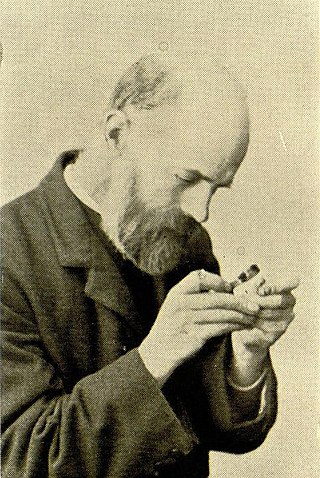
Rev. William Richardson Linton, Corpus Christi College, M.A., was an English botanist and vicar of the parish of Shirley, Derbyshire. He was regarded as one of the leading batologists of his day.
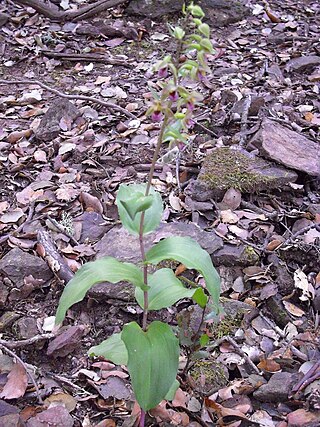
Epipactis tremolsii is a species of terrestrial orchid in the genus Epipactis. It is confined to the western Mediterranean region where it grows in open mixed oak, cork oak and pine woodland. In Portugal in the Algarve region, it flowers rather earlier than Epipactis helleborine and can be found from April onwards.

Epipactis dunensis, commonly known as dune helleborine, is a species of plant in the orchid family Orchidaceae and is endemic to Great Britain and Ireland. It typically grows to a height of 20–50 cm (7.9–19.7 in) and the upper half of the flowering stalk is hairy. The plant has a long, fleshy rootstock and three to ten yellowish green, oval to lance-shaped leaves arranged in opposite rows along the flowering stem with up to 35 flowers. The three sepals are greenish, the two petals paler, the lower part of the labellum is boat-shaped and dark, chocolate brown with a transparent, whitish rim and the epichile is heart-shaped with a pointed tip. Flowering occurs from late June to mid-August, the flowers are mainly self-pollinated, and the fruit is a capsule, from which light, microscopic seeds are spread by the wind.

Philippe Cuénoud is a Swiss entomologist and botanist living in Onex, who worked on the Psocoptera of Switzerland and Papua New Guinea, as well as on plant phylogeny. He found the only recently known population of Lachesilla rossica near Geneva and contributed further to the knowledge of the flora and fauna of the canton of Geneva with the first mention of a slender-billed gull and with the discovery of the first reported population of small-leaved helleborines. He also participated in a multidisciplinary study of the free-living fauna and flora of Basel's Zoo. In a 1999 trip to Brasil with Alain Chautems, he was among the first few people to see the newly rediscovered flower Sinningia araneosa, that had gone missing for more than a century.
















